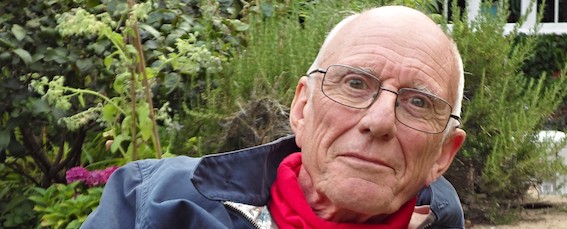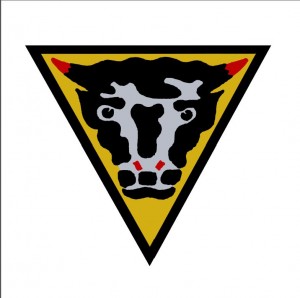Hobo’s 79th Armoured Division insignia
This is the famous insignia of the 79th Armoured Division. It seems very likely that, like the 79th itself, it was designed by General Percy Hobart (Sir Percy, as he became). If so, he was as creative with a pencil as with his military planning. He was certainly close friends with writers and artists, including Eric Kennington, one of the best war artists of WW1 and WW2.
For more on this story, see below…
Following my tentative research into the origins and production of The Story 0f 79th Armoured Division (it was put together in the ruins of Hamburg in the early summer of 1945), I have been looking a little more into the origins and production of the brilliant Bull’s Head motif for the division’s insignia or flash.
It seems from his biography, Armoured Crusader: Major-General Sir Percy Hobart, 1967, by Kenneth Macksey, that it was “Hobo” himself who designed at least the first draft.
It followed his initiating the design of the full bull profile that he wanted – and got – for the 11th Armoured Division, also his creation. His choice of beast followed his devotion to the idea that he was descended from the Hobart’s of Blickling Hall and he showed his fealty in following their heraldic use of, as Macksey writes, “‘A bull sable, passant, regardant’ – the black bull on a yellow field – and fully furnished, as the ladies of the Royal School of Needlework were requested to make it after their first design had been returned by Hobo with instructions that the outward signs of masculinity were not to be omitted.”
As soon as he knew that he was form the 79th (from other units), “he sketched the divisional flash – a bull’s head staring at its beholder in angry defiance with a note alongside: ‘advise me about Divl Sign. I thought about having the Bull’s head alone – is this too too symbolical!!!'”.
Whatever happened next, the division was soon sporting this very fine graphic.
The descendants and remnants of the 79th continued to do so until very recently, and even now it seems to be used by 32 Engineer Regiment.



Leave a comment